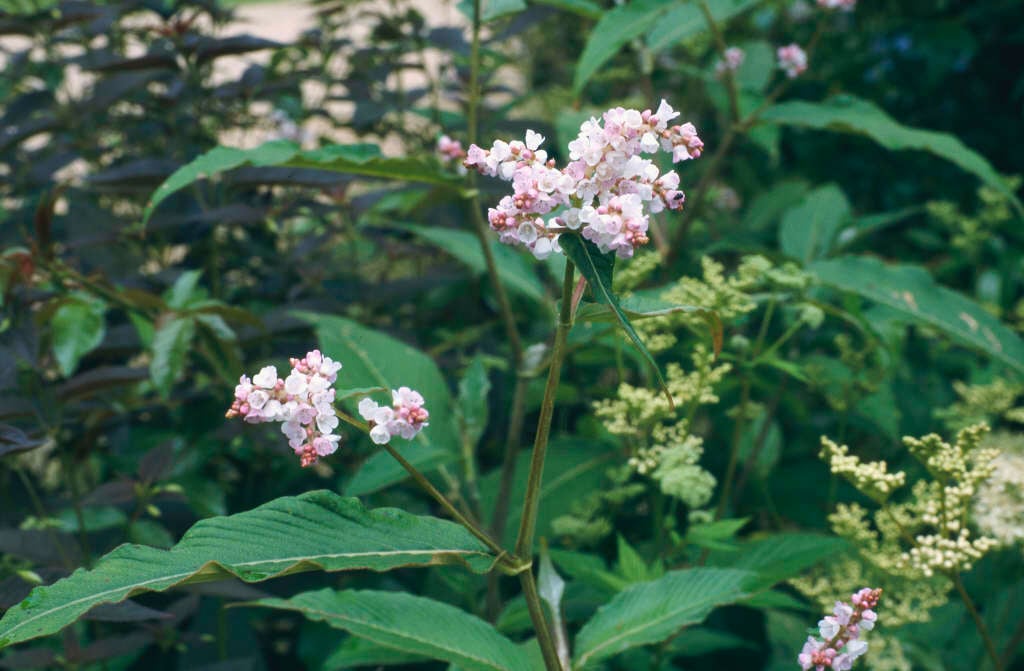Koenigia campanulata
lesser knotweed
A semi-evergreen or herbaceous perennial with attractively veined, ovate leaves which are whitish, later pale brown, beneath, and short panicles of small, bell-shaped, pale pink flowers

Buy this plant
Size
Ultimate height
0.5–1 metresTime to ultimate height
2–5 yearsUltimate spread
0.5–1 metresGrowing conditions
Moisture
Moist but well–drained, Poorly–drainedpH
Acid, Alkaline, NeutralColour & scent
| Stem | Flower | Foliage | Fruit | |
| Spring | Green | |||
|---|---|---|---|---|
| Summer | Pink | Green Brown | ||
| Autumn | Pink | Green Brown | ||
| Winter | Green Brown |
Position
- Full sun
- Partial shade
Aspect
East–facing or South–facing or North–facing or West–facing
Exposure
Exposed or Sheltered Hardiness
H7Botanical details
- Family
- Polygonaceae
- Native to GB / Ireland
- No
- Foliage
- Deciduous
- Habit
- Bushy
- Genus
A genus of annual or clump-forming perennial plants with terminal or axillary inflorescences carried on upright stems. Flowers are small, pale-coloured usually white or pink. Seeds are borne in achenes
- Name status
Correct
- Plant range
- Himalaya
How to grow
Cultivation
Grow in any moist soil in full sun or partial shade
Propagation
Propagate by division in spring or autumn
Suggested planting locations and garden types
- Cottage and informal garden
- Flower borders and beds
Pruning
Cut back after flowering
Pests
Generally pest-free
Diseases
Generally disease-free
Love gardening
Sign up to receive regular gardening tips, inspiration, offers and more
View our Privacy Policy
Get involved
The Royal Horticultural Society is the UK’s leading gardening charity. We aim to enrich everyone’s life through plants, and make the UK a greener and more beautiful place.